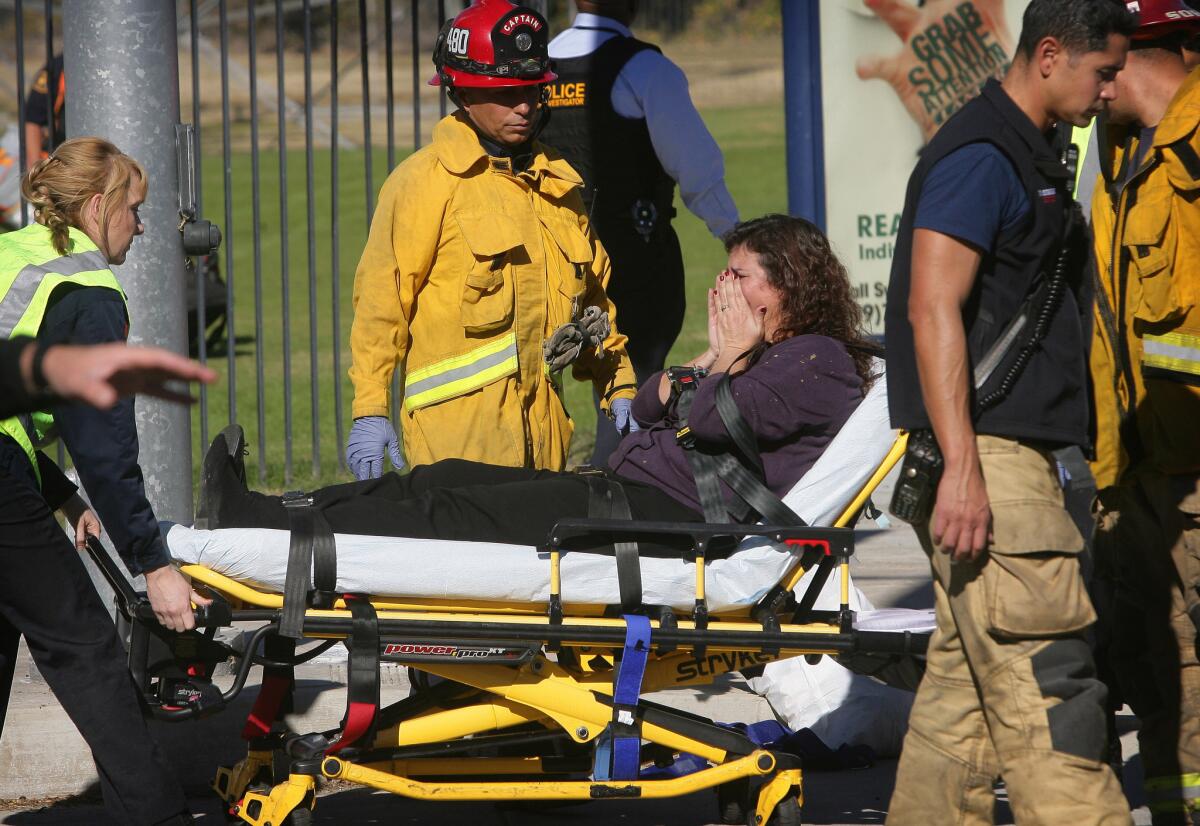Moments after San Bernardino massacre, the grim task of distinguishing the living from the dead

A victim is wheeled away on a stretcher following a shooting that killed multiple people at a social services facility, Wednesday, Dec. 2, 2015, in San Bernardino, Calif.
San Bernardino Fire Battalion Chief Grant Hubbell was on duty at 11:02 a.m. Wednesday when he saw the report of a potential active shooter at the Inland Regional Center in San Bernardino.
Within about three minutes of that call, Hubbell, two paramedic engine companies and a paramedic truck company had set up a staging area a short distance from the complex.
From there, they waited to get word from police that the scene was cleared. He doesn’t know exactly how long, but it was a “short period of time” before they got that word, he said.
FULL COVERAGE: San Bernardino terror attack | Live updates
At that point, Hubbell said, he assumed command of the incident and established a triage and treatment area on Park Center Drive and Waterman Avenue, an intersection in front of Inland Regional Center.
Police officers used their patrol cars to bring patients to that site where they could be treated and, if need be, put in ambulances.
Under their training, he said, the goal is to identify which victims are in the most immediate need of care in order to get them treated and taken to a hospital as quickly as possible.
The first responders were helped along by tactical paramedic Ryan Starling, who happened to be training with a SWAT team nearby.
Rather than stay back in a safe area, Starling went into the building with the rest of the SWAT team. He began the difficult task of figuring out which victims had already died so that police could focus on getting the most severely injured victims to treatment, Hubbell said. “That allowed the officers that were inside to focus on extracting the patients who were still alive and needed immediate triage and transport,” Hubbell said.
“I think it was very instrumental,” he said. “It let the limited resources on scene focus on those patients that needed the immediate care.”
Hubbard and the rest of the world would only learn later that a married couple who had been “radicalized” had entered the room and opened fire with military-style weapons, killing 14 people. Authorities describe it as the deadliest terrorist attack on U.S. soil since 9/11.
“From the time that the first critical patient entered the treatment area to the time the last critical patient exited was 15 minutes,” Hubbell said. “We’re pretty proud of that.”
MORE ON SAN BERNARDINO
San Bernardino shooting victims: Who they were
Did Syed Rizwan Farook and Tashfeen Malik get help in terror plot?
Suddenly, there’s a surge in interest to buy guns around San Bernardino
More to Read
Start your day right
Sign up for Essential California for news, features and recommendations from the L.A. Times and beyond in your inbox six days a week.
You may occasionally receive promotional content from the Los Angeles Times.






